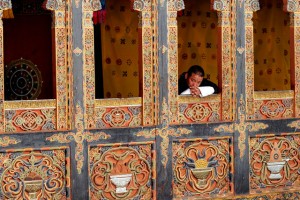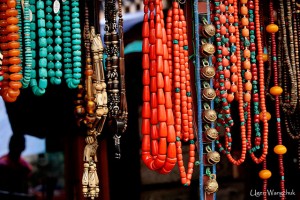- Home
- Destination
- Places to Visit
- Activities
- Cultural Tours
- Festival Tours
- Thimphu Tshechu
- Paro Tshechu
- Punakha Tshechu and Drubchen
- Takin Festival
- The Black-necked Crane Festival
- Chorten Kora Festival
- Dochula Druk Wangyel Festival
- Gomphu Kora Festival
- Haa Summer Festival
- Jambay Lhakhang Festival
- Kurjey Festival
- Lhuntse Tshechu
- Matsutake Festival
- Merak Tshechu
- Mongar Tshechu
- Nimalung Festival
- Nomad Festival
- Pema Gatshel Tshechu
- Sakteng Festival
- The Gasa Tshachu
- Trashigang Tshechu
- Adventure Tour
- Trekking Tours
- Druk Path Trek
- Dagala Thousand Lakes Trek
- Bumthang Cultural Trek
- Bumthang Owl Trek
- Gangtey Trek
- Punakha Winter Trek
- Snowman Trek I
- Snowman Trek II
- Wangduephodrang Tshechu
- Wild East Rodung La Trek
- Duer Hot Springs Trek
- Jomolhari Loop Trek
- Jomolhari Trek
- Laya Gasa Trek
- Merak Sakteng Trek
- Nabji Korphu Trek
- Samtengang Winter Trek
- Trongsa Tshechu
- Ura Yakchoe
- Spirituality & Wellness
- About Bhutan
- Travel Information
- Hotels
- Inquiry
- Gallery
- About Us
Culture and Tradition
 While Bhutan is definitely one of the smallest countries in the world, yet the cultural diversity and its richness are profound. As such strong emphasis is laid on the promotion and preservation of its rich cultural diversity. It is believed that ensuring protection and preservation of our unique culture would assist in protecting the sovereignty of the nation.
While Bhutan is definitely one of the smallest countries in the world, yet the cultural diversity and its richness are profound. As such strong emphasis is laid on the promotion and preservation of its rich cultural diversity. It is believed that ensuring protection and preservation of our unique culture would assist in protecting the sovereignty of the nation.
Birth
The birth of a new born baby is always welcomed heartily. Bhutanese value children as progenitors of future and therefore does not discriminate between a girl child and a boy child. Mothers are always looked after carefully and because of the strong belief, outsiders and guests are kept at bay for the first three days as it is believed that the house is polluted. On the third day after the child’s birth, a short purification ritual is performed after which the outsiders pay visits to the new born child and the mother. Gifts are offered ranging from dairy products to cloth and money.
The child is not immediately named as naming a child is always the prerogative of a highly religious person. The mother and the child also visits a local temple to receive blessings from the local deity (natal deity) and the name associated with the deity is given. In some cases, the child is given the name of the day on which the child is born. Based on the Bhutanese calendar, a horoscope is written that details out the time and the date of the birth, various rituals to be performed at different time in the life of the child and to an extent predicting his future.
Marriage
Arranged marriages were popular just a few decades back. Normally, people married among the relatives. Cross-cousin marriage is a popular tradition amongst the people of eastern Bhutan. This is now becoming unpopular among the literate mass and most of the marriages take place on their accord depending on their choice.
Marriages are simple affairs and are kept low-key. However, elaborate rituals are performed for lasting unions amongst the bride and the bridegroom. As the religious ceremony comes to an end, parents, relatives and the friends present the newlyweds with traditional offerings of scarves along with gifts in the form of cash and goods.
In the western part of Bhutan, the husband goes out to the wife’s house after marriage while the practice in eastern Bhutan is that the wife usually accompanies the husband. The newlyweds may also choose to live on their own. An accepted norm of the Bhutanese way of life is divorces that carry no ignominy or disgrace and in most instances they move on with a new life partner.
Funeral
Death signifies re-birth or a mere passing on to a new life. In keeping with the traditions, elaborate rituals are performed to ensure a safe passage and a good rebirth. Important days such as the 7th day, 14th day, 21st day and 49th days are earmarked where prayer flags in the name of the deceased are erected and rituals performed.
The deceased are normally cremated while the southern Bhutanese bury and the Brokpas chop off and feed them to the vultures. Elaborate rituals are also conducted on the death anniversary with erection of prayer flags. The relatives and people of the locality come with alcohol, rice, or other sundry items to attend these rituals.
Bhutanese Dress
 A distinctive feature of the Bhutanese is their dress that has evolved over the years. The Gho or the dress worn by the Bhutanese men reaches just till their knees while Kira, the dress worn by women reaches till their ankles. The Gho is folded and tied at the waist by a traditional belt known as Kera and the pouch that is formed is used for carrying small articles such as wallet, mobiles and Doma, the beetle nut. Traditionally it was used for carrying bowls and a small dagger inserted in between as was the custom then.
A distinctive feature of the Bhutanese is their dress that has evolved over the years. The Gho or the dress worn by the Bhutanese men reaches just till their knees while Kira, the dress worn by women reaches till their ankles. The Gho is folded and tied at the waist by a traditional belt known as Kera and the pouch that is formed is used for carrying small articles such as wallet, mobiles and Doma, the beetle nut. Traditionally it was used for carrying bowls and a small dagger inserted in between as was the custom then.
But the dress for the tribal and semi nomadic people like the Bramis and Brokpas of eastern Bhutan are generally different from the rest of the Bhutanese population. The Brokpas and the Bramis wear dresses woven either out of Yak or Sheep hair.
In keeping with the tradition, it is mandatory for all Bhutanese to wear scarves while visiting Dzongs and other administrative centers. The scarf worn by men is known as Kabney while that of women is known as Rachu. The scarves worn are different in color and signify their status or rank. While the general Bhutanese men wear scarf that is white in color, the King and the Je Khenpo or the Head Abbot wear yellow scarves. The ministers wear orange scarves while the Judges wear green and the district administrators wear red scarves with a small white strip that runs through. The Rachu is hung over their shoulder and unlike scarves worn by men does not have any color attached to it. They are usually woven out of raw silk with rich patterns.
Eating habits
Traditional Bhutanese eating habits are simple and generally eat with their hands. The family members eat sitting cross legged on the wooden floors with food being first served to the head of the household. It is usually women who serves food and in most cases the mother. Before eating, a short prayer is offered and a small morsel placed on the wooden floor as offerings to the spirits and deities. With modernization, eating habits have changed and in urban areas, people usually eat with spoons and make use of dining tables and chairs.
Traditionally dishes were cooked in earthenware’s, but with the easy availability of imported pans and pots, the use of earthenware’s have been replaced. Usual meals consist of rice, a dish of chili and cheese known as Ema Datshi, pork or beef curry or lentils.
Festivals
Bhutan is rich in cultural diversity and this richness is further enhanced by the variety of festivals that is being observed. Every village is known for their unique festivals though the most widely known is the Tshechu. As the Tshechu begins, the villagers and the general populace dressed in their finery congregate in the temples and monasteries to witness these festivals. Tshechus are usually occasions to mark the important events in the life of the second Buddha, the precious Indian Tantric master known as Guru Rinpoche or the Precious Gem. Various mask dances are performed together with songs and dances for three days. It provides the villagers with a respite from their hard day’s labor and to catch up with their family and friends. People share their food of Red rice, pork and Ema Datshi and drown themselves in the revelry of their traditional wine known as Ara.



